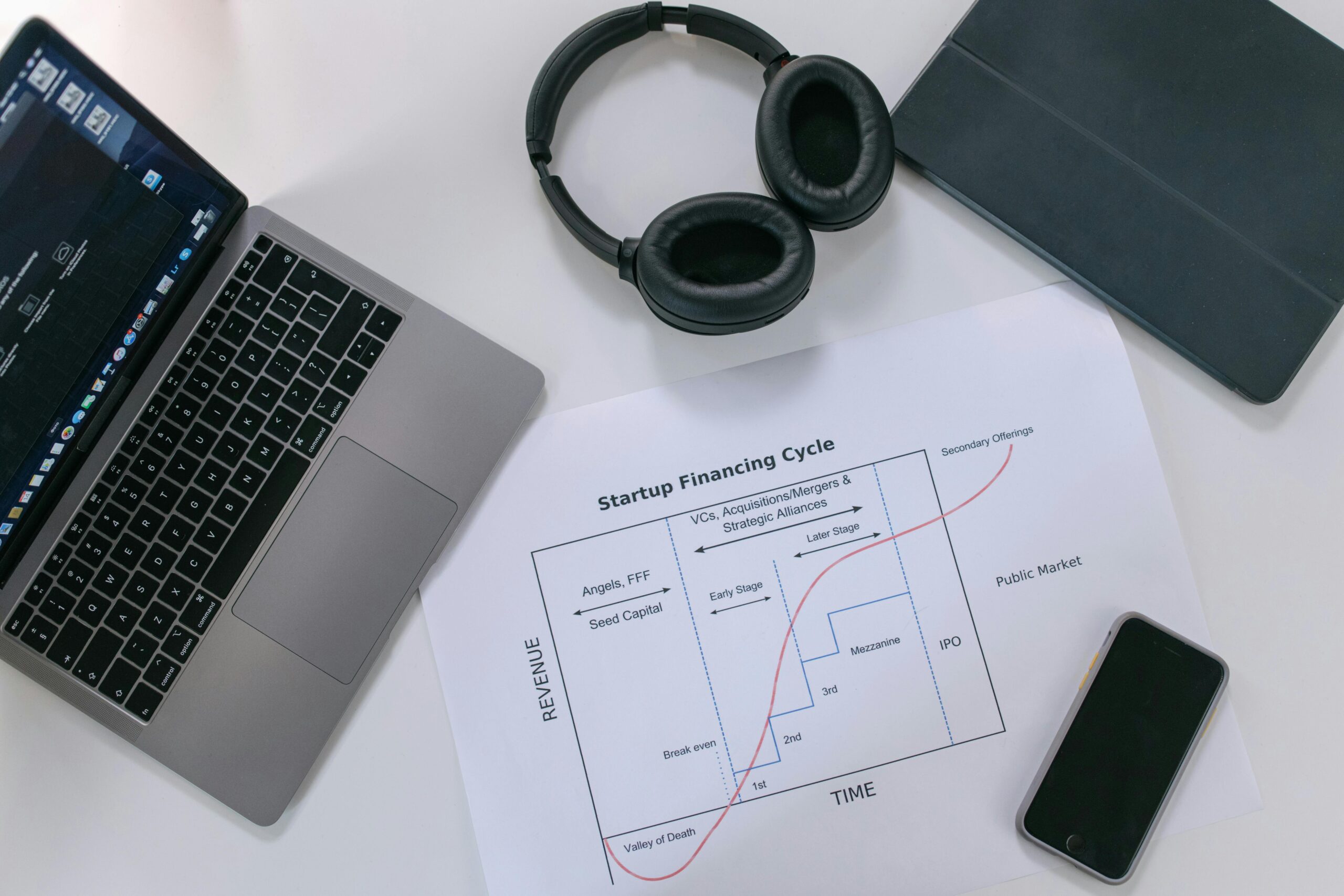The world of medical technology, or Medtech, is a dynamic and rapidly evolving landscape. It’s a sector where innovation meets healthcare, where groundbreaking solutions can change lives, and where startups can make a significant impact in patient’s lives. However, navigating the Medtech industry, especially when it comes to fundraising, can be a formidable challenge. In this article, we’ll dive into the unique woes of fundraising for Medtech startups and discuss strategies to overcome these challenges. We’ll also explore the critical elements of an investor-ready pitch deck and shed light on the importance of upstream marketing efforts. So, let’s embark on the journey of a Medtech startup’s roadmap to success!
Brief overview of the Medtech landscape
The Medtech landscape encompasses a wide range of innovations, from advanced medical devices to cutting-edge software solutions designed to improve patient care and healthcare delivery. It’s a field where groundbreaking technologies can lead to better treatment options, early disease detection, and enhanced patient outcomes. Medtech startups often emerge with a vision to revolutionize healthcare, and the potential for positive change is immense.
While the promise of innovation is vast, so are the challenges. The Medtech sector faces unique hurdles when it comes to fundraising, largely due to the nature of the products and the regulatory environment. Let’s dive into the distinctive woes of fundraising for Medtech startups.
Be Prepared for the Unique Woes of Medtech Startups
Longer Development Cycles
Medtech product development is a complex and time-consuming process. Unlike some other startups that can bring a software product to market relatively quickly, Medtech often requires years of research, prototyping, clinical trials, and regulatory approvals. Investors need to understand the long-term commitment and patience required.
When pitching to investors, emphasize your team’s expertise in navigating lengthy development cycles. Showcase milestones achieved and demonstrate that you’re equipped for the journey.
High Capital Requirement
Developing Medtech solutions demands substantial initial investments. Research, clinical trials, regulatory approvals, and manufacturing costs can quickly add up. Investors in this space are aware that substantial capital is needed, but it’s crucial to present a clear financial plan that demonstrates how you intend to allocate and manage these funds.
Break down your financial requirements and allocation plans in your pitch deck. Investors need to know exactly how their capital will be used and when they can expect returns.
Regulatory Challenges
The stringent requirements for medical technologies make regulatory compliance a formidable hurdle. The FDA and other regulatory bodies have rigorous standards that must be met before a Medtech product can hit the market. Investors are acutely aware of the complexities involved and the potential delays in the approval process.
Highlight your regulatory strategy in your pitch deck. Explain how you plan to navigate the regulatory pathway, the milestones achieved, and the anticipated timeline. Investors will appreciate a well-thought-out plan.
Market Uncertainty
The healthcare industry is highly dynamic, with potential changes in healthcare policies and patient needs. Investors need assurance that your solution is adaptable and can withstand market fluctuations. Moreover, understanding and addressing evolving market demands are essential.
In your pitch deck, demonstrate that you’ve considered various scenarios and have contingency plans in place. Show that your solution can pivot if necessary to align with changing market dynamics.

Brand Consultant POV: Crafting an Investor-Ready Pitch Deck
When crafting a pitch deck for Medtech startups, it’s imperative to articulate not just the “what” and “how,” but importantly, the “Why Now?” This opening gambit sets the stage for a narrative that convinces investors of the timeliness and urgency of your innovation.
In a sector where timing can significantly impact adoption rates and market penetration, explaining why this moment in time is pivotal for your solution can capture investors’ attention. It might be due to a recent technological advancement, a shift in regulatory landscapes, or a newly identified market need exacerbated by global health trends.
Whatever the reason, starting with the “Why Now?” provides a compelling context for your audience, framing your Medtech solution as a timely response to an immediate and growing need.
Problem to Solve
Begin your pitch deck by delving into the medical issue your technology aims to address. Investors must grasp the magnitude of the problem and the transformative potential of your solution. Utilize tangible examples and robust statistics to bring to life the problem. Paint a vivid picture of the existing gap in healthcare that your technology is poised to fill, thereby setting the stage for the introduction of your solution.
Solution Showcase
This section is where you shine a spotlight on your Medtech innovation, highlighting its distinctiveness and efficacy. Here, you’ll want to elucidate how your technology not only solves the identified problem but does so more effectively than current alternatives. Your Unique Value Proposition (UVP) should be front and center, underlining how it uniquely caters to the needs unmet by competitors. Employ visuals and succinct language to ensure the investor can easily comprehend and appreciate the uniqueness of your offering.
Business Model
Clearly articulate your monetization strategy, including your pricing model, projected revenue streams, and path to profitability. Transparency around your financial forecasts and the assumptions they’re based on is key. Investors are drawn to honesty and a cogent financial roadmap that demonstrates a thoughtful approach to achieving financial success.
Go-to-Market Strategy
Detail your strategy for launching, penetrating the market, and scaling. This section should convince investors of your meticulous planning regarding the practical aspects of introducing and expanding your Medtech solution in the market. A comprehensive go-to-market strategy, complete with milestones and timelines, alongside an analysis of your Total Addressable Market (TAM), showcases your startup’s potential for significant market capture and successful execution.
Competitive Landscape
In this part of your pitch, position your solution within the competitive ecosystem, emphasizing your competitive advantages. A thorough competitive analysis not only demonstrates your awareness of the market dynamics but also highlights why and how your Medtech startup is uniquely positioned for success.
Team Composition
Finally, the team behind the technology often plays a pivotal role in winning investor confidence. Highlight the collective expertise, experience, and achievements of your team members. This reassures investors that your startup is equipped with the talent necessary to navigate the complexities of the Medtech sector and bring your vision to fruition.
Remember, your pitch deck is more than just a presentation; it’s a narrative that weaves together the critical elements of your startup into a compelling argument for investment now.
Upstream Marketing Efforts: Where to Focus Now
Creating an investor-ready pitch deck is essential, but it’s only one piece of the puzzle. Upstream marketing efforts play a critical role in building awareness and interest in your Medtech solution. A key aspect of this is continuous market research and maximizing the Voice of Customer (VoC).

The Importance of Continuous Market Research
Continuous market research is a cornerstone of success in the Medtech industry. As the healthcare landscape evolves, so do the needs and preferences of patients, healthcare providers, and institutions. Regularly updating your understanding of the market is essential for staying relevant and competitive. Market research allows you to identify emerging trends, assess the competitive landscape, and make informed decisions about product development and marketing strategies.
Invest in market research tools and resources to stay updated on industry trends and gather real-time insights. Be agile in adapting your strategies based on market feedback, aligning your efforts with your TAM.
Implementing a Process to Maximize Voice of Customer (VoC)
The Voice of Customer (VoC) is invaluable for Medtech startups. It represents the collective insights, needs, and opinions of your target audience. Implementing a structured process to capture and utilize VoC can help you tailor your Medtech solution to precisely match what your customers want and need. This customer-centric approach not only enhances the effectiveness of your product but also builds strong relationships with your audience, reinforcing your UVP.
Use KOL surveys, interviews, and feedback mechanisms to regularly collect and analyze customer input. Act on this feedback to make continuous improvements to your product and marketing efforts, ensuring that you resonate with your TAM.
Conclusion
In the ever-evolving landscape of Medtech startups, a well-structured pitch deck, and targeted upstream marketing efforts are pivotal. These elements not only attract investors but also lay the foundation for success in the MedTech industry. It’s a challenging journey, but staying informed, prepared, and resilient will ultimately lead to groundbreaking advancements in healthcare. So, if you’re on the path to Medtech innovation, remember to craft a compelling pitch, and be ready to make waves with your groundbreaking solution.
If you need a partner on your journey to success, connect with one of the leading brand and consulting firms in MedTech, Tribe Agency. Subject matter experts in the industry who can help with your brand identity, fundraising strategy, pitch deck, and go-to-market initiatives to name a few.
Contact them or set up a free 15-minute discovery call today.



























































Read the Comments +